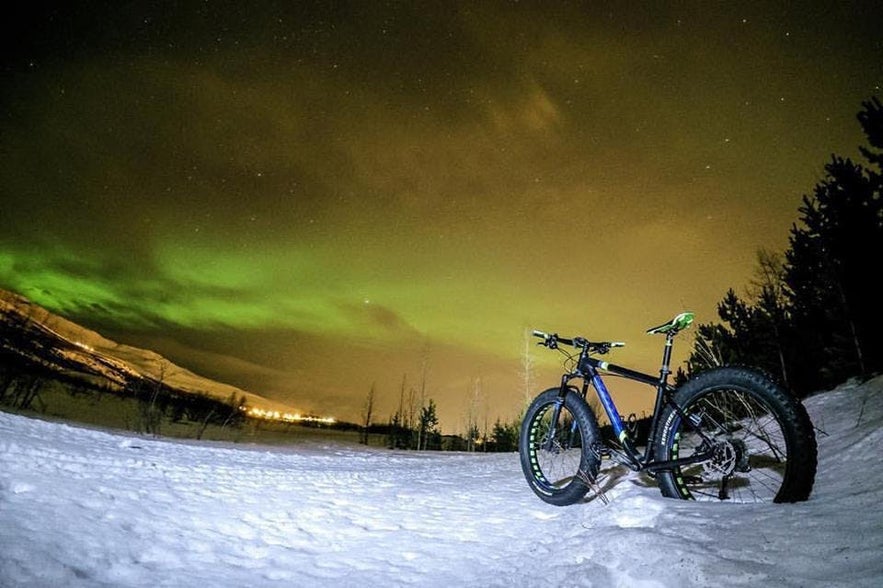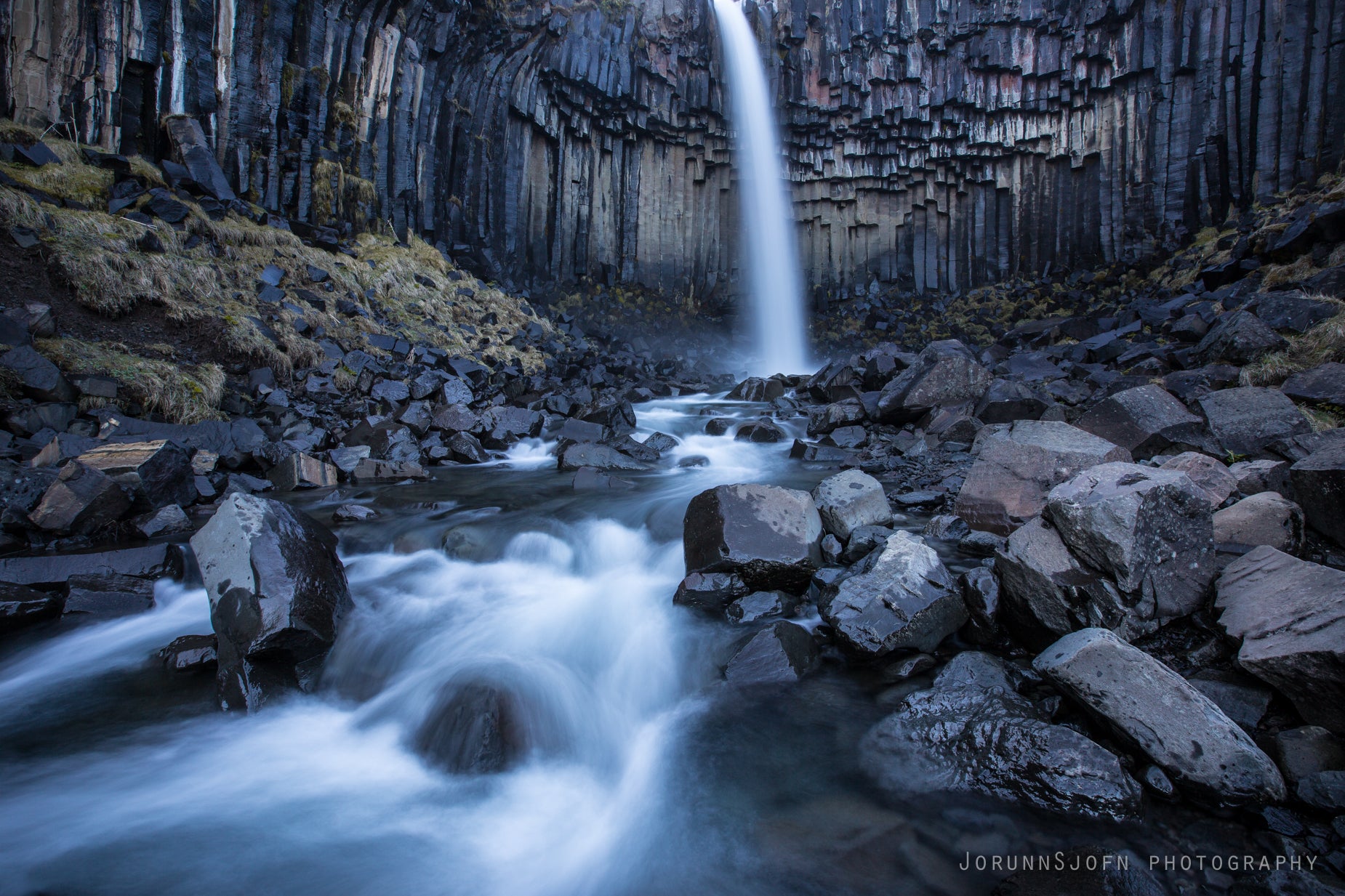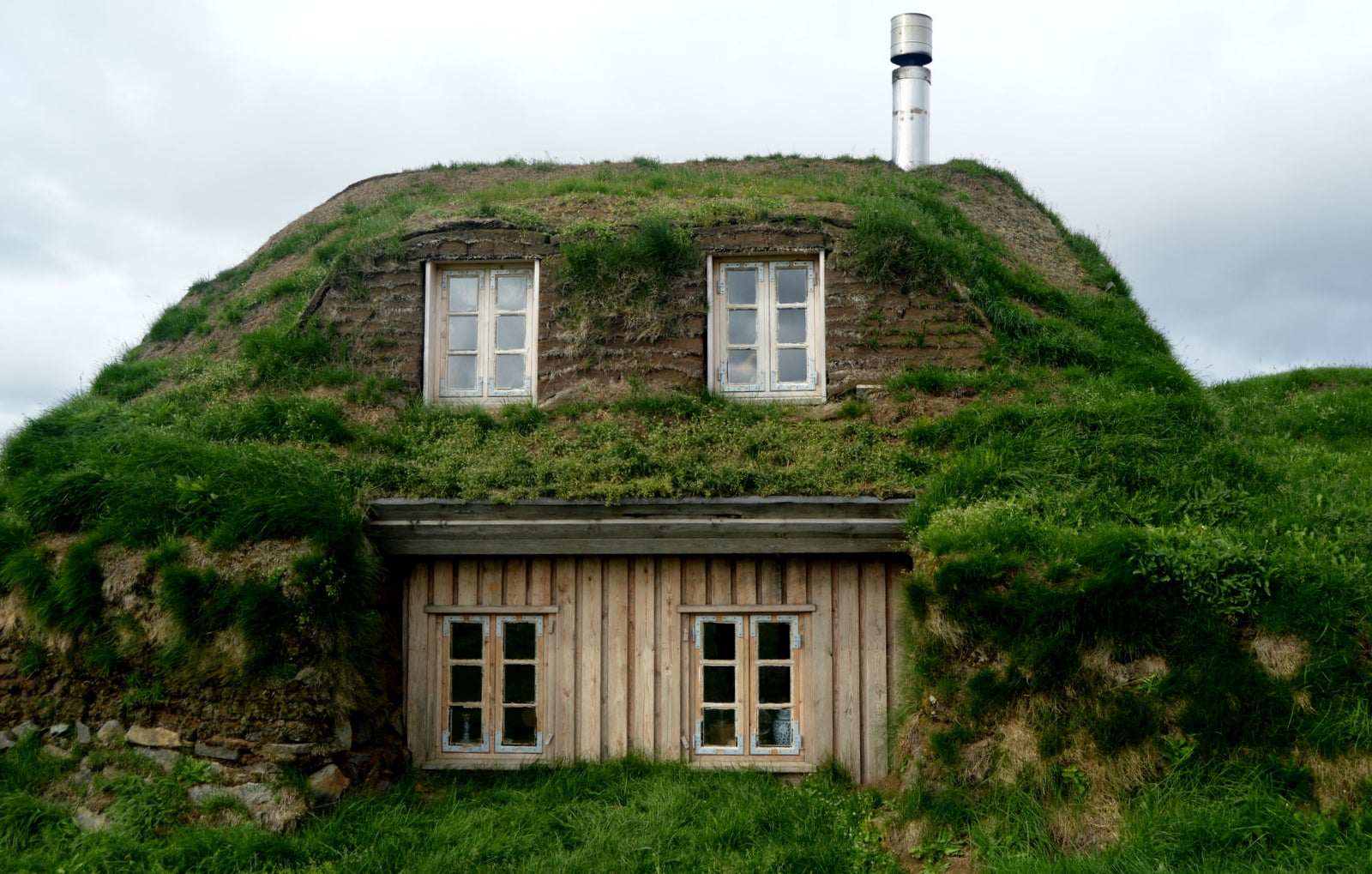Everyone loves a cyclist—that is until they’re driving alongside one, at which point, they become a dangerous nuisance, likely to record every moment of your frustration on their readily equip helmet-camera.
Before you know it, your unrelenting anger is showcased to the world through YouTube; within a week, you’ll find yourself before a tribunal, attempting to justify your reaction to a jury of cyclists. Then, your license is banned. You’re facing a five-year jail term for road rage.
Thank you, bikie.

When not engaged in recording the fury of others, cyclists love, I assume, to cycle. Pedalling away on their two-wheelers, this interesting breed of sportsman has long found Iceland to be particularly suited to cycling; the roads are long, scenic and hold little traffic, and most of the major attractions can be accessed from the island’s circular Ring Road.
- See Also: The Top 12 Things To Do in Iceland
This has allowed cyclists to merge their passion with traditional sightseeing, extending the process over a number of days in order to allow passage from one destination to the next.
With that being said, cyclists must also face the notoriety of Iceland’s unpredictable weather, speeding traffic, lethargy and, most crucially, one another’s company.
In short, cycling can be a unique experience, but not one for the faint of heart... or the psychologically stable.
Header Photo From Fat Bike Adventure at Lake Myvatn.
Why Go Cycling in Iceland?

A very good question indeed, and one that is only made acceptable by the inclusion of “Iceland” in it. To be quite honest, why one feels the urge to spend eight hours pedalling is beyond me, beyond my abilities as a marketing professional.
What I will say though is that it is undeniably better than pretending to cycle in a gymnasium.
Yet, in self-righteous retaliation to my own counter-argument, there are, of course, a wealth of other transportation options available, be it horseback riding, Super Jeep tours, paragliding or a Self-Drive… choose wisely before deciding how you wish to spend your limited time on the island.
But, if cycle you must, know now that, despite my best intentions, you will indeed find insurmountable joy in doing so here. Those who like the saddle pressed against their sciatic nerve will, in truth, find no better location for it. That’s not to suggest it’s without both regulation and downsides, of which we will delve into together first.
Cycling Regulations in Iceland
Thank the Norse Pantheon, cyclists in Iceland are restrained from their typical misbehaviour by a number of important regulations. Those who fail to adhere to said regulations will likely be fined, chastised or summarily executed by the roadside.
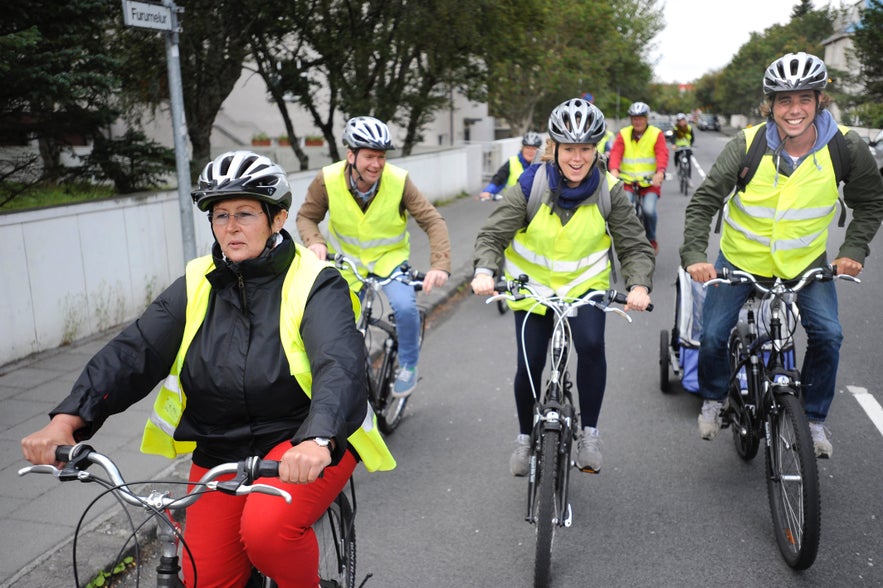
One of the most important regulations applies to all road users, be they cyclists, motorists, horse-riders or hitchhikers; the right side of the road is the right side of the road. The last thing you want is to head directly into oncoming traffic, a fact that cyclists should consider especially.
When on the right-hand side of the road, keep to the far right, leaving ample room for vehicles to pass. Otherwise, expect the honking of horns, close-shaves and, potentially, a bumper against the back wheel.
Cyclists are allowed to ride their bicycles on almost all roads in Iceland, though they are recommended to only do so in areas where others can’t see them if only to save both parties embarrassment.
- See Also: Weather in Iceland & Best Time To Visit
In fact, the only road that is officially inaccessible to cyclists is the Hvalfjörður tunnel, though it is the only road dark enough not to be seen by passing traffic. Major trails through parks and forested areas can be used by bikers as long as their speed is kept low.
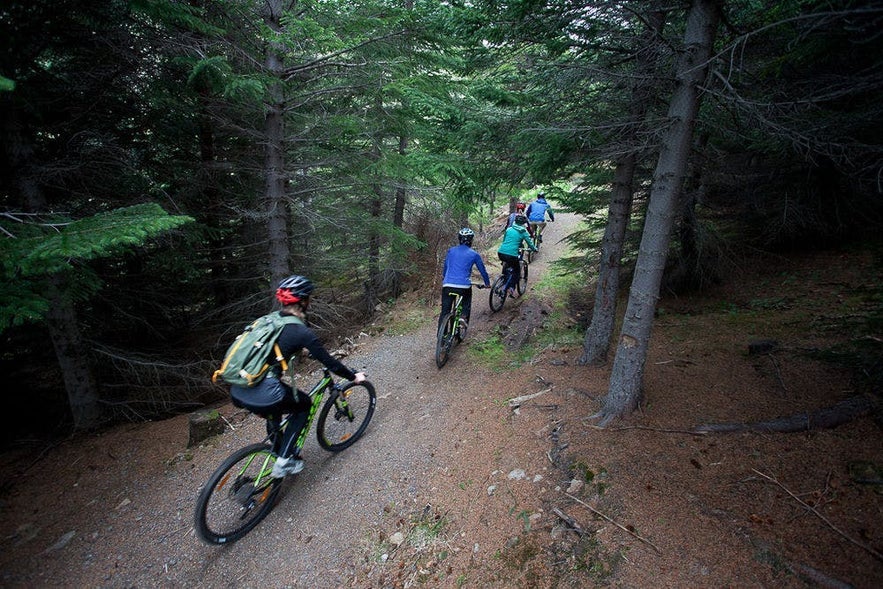
The major motorways in Reykjavík are also not suitable for cyclists, and so specially-made, government-funded cycling paths have been built to gratify this socially acceptable perversion.
Speaking of legality, it is entirely fine to ride your bike on pedestrian walkways and sideways in Iceland, given that you show due care to the civilians who have chosen not to follow your life choices that day. It is illegal, however, to cycle off-road due to the country’s fragile vegetation.
- See Also: Sustainable Tourism in Iceland.
Those 14 years old and younger are required to wear a helmet, whilst those who have outstretched the folly of youth are free to crack their head on the curb. To avoid such incidents, it is also a requirement that cyclists have head and tail lights on their bike during periods of darkness, low-light or poor visibility.
During the day, all the bets are off, and cyclists are free to ride in their underpants if so desired.
Dangers of Cycling in Iceland
Iceland can already be a pretty dangerous place. Take for instance sleeper waves at Reynisfjara black sand beach, already known to sweep unsuspecting visitors into the Atlantic. Another example might be the group of tourists caught stranded on an iceberg at Jökulsárlón glacial lagoon.

Only recently, a man was caught clambering around the slippery lower crags of Gullfoss waterfall, sacrificing both sanity and dignity to capture the perfect selfie.
- See Also: Things That Can Kill You in Iceland.
And yet, getting aboard a thinly-framed piece of equipment, that requires long-term fitness, balance and stamina, then taking a 6-day trip around an entire country seems a tad more treacherous.
After all, Iceland is not known for its incredible infrastructure outside of the capital; the Ring Road is the only tarmacked route around the country, and more importantly, the roads are used by speeding blocks of metal operated by dozy visitors.
Now, I’m demeaning the human spirit when I say that I know people are capable of such a feat, it’s just that no one can argue its a particularly safe or comfortable affair.
To minimize the risks you’re bringing upon yourself, do as the Icelanders do and follow the daily weather reports with a zealous fanaticism. If the weather looks as though it might be unsuitable for cycling, don’t go. If the wind is too strong, don’t go. If the snow has hidden the roadside, don’t go. Only cycle with your own limits, and take responsibility for the journey ahead.
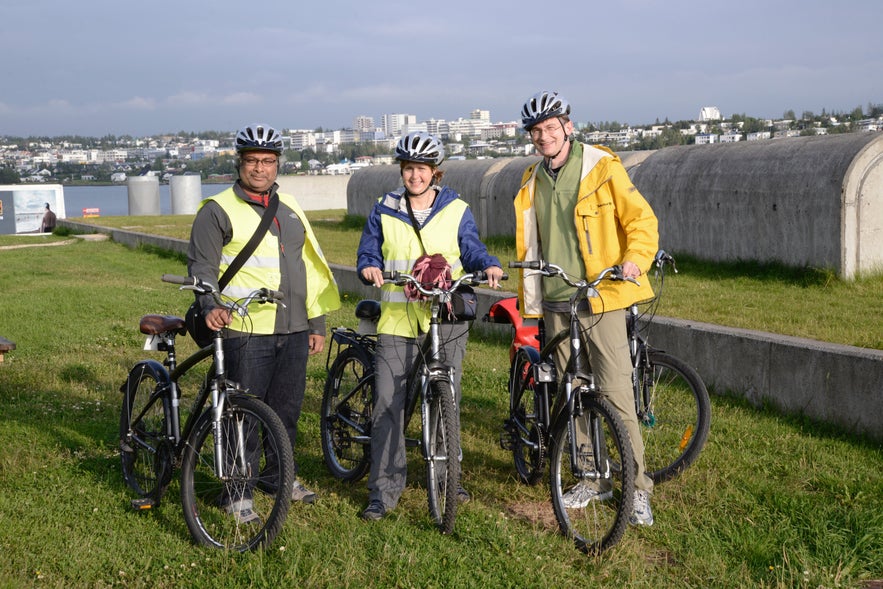
In essence, this means being fully prepared. You will need wind and rainproof outerwear, sturdy shoes and warm clothing, including hats and gloves. As for the bike itself, you will need to ensure that everything from the tyres to the chain is in good condition as you never know for sure exactly when the next cycling shop will come along.
One should expect obstacles along the way, with the most common problems being flat tyres, broken spokes and chains, loose nuts and bolts and fault luggage racks. It is recommended to bring a small toolkit with you for such incidents.
Benefits of Cycling in Iceland

As, by now, I'm sure you can imagine, I personally am not one for spending my time on the back of a bicycle, and despite the years of persuasions and recommendations, I've still found little reason to do so.
Having said that, writing this article has forced me to face up to my own deep-seated prejudices—as a former delivery driver, I only speak from experience when I say, sincerely, that cyclists are the devil... it just comes off spiteful, when in truth, it's merely bitter.
- See Also: 13 Reasons To Visit Iceland
One of the great benefits of cycling in Iceland is that you can spend the majority of your holiday actively keeping fit and healthy.
Yippee!
Of course, that's not entirely true if you were to crash your bicycle, so make sure to keep a reasonable pace (Iceland's landscape is incredibly hilly, meaning you'll find yourself experience adrenaline and exhilaration... even when you don't want to).
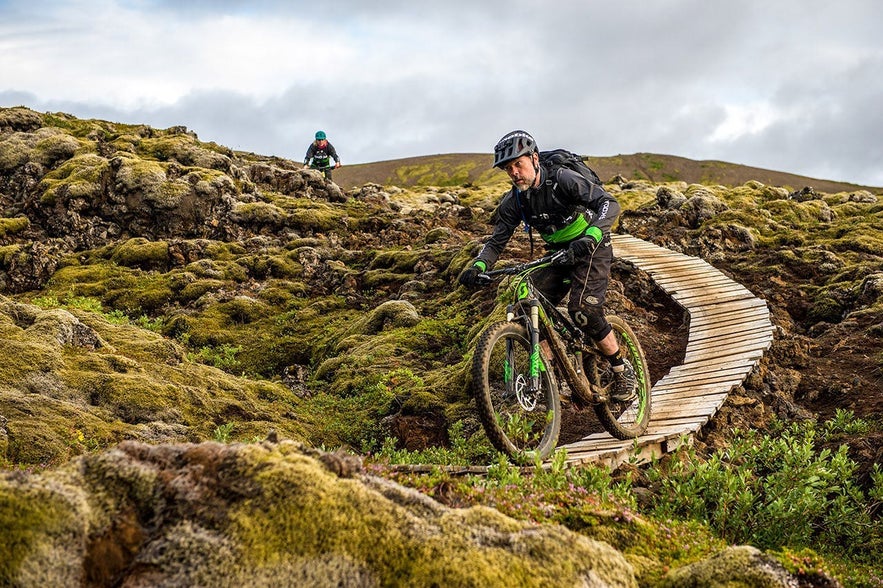
Another benefit—this one far more reasonable—is the connection one feels when immersed in nature for so long. Taking for granted that you won't be preoccupied with breathing exercises or wobbly wheels, sightseeing from the bike saddle can be an incredibly rewarding experience, incorporating the "journey to the attraction" as part of the experience itself.
- See Also: 37 Reasons Not To Visit Iceland
Cyclists can also do away with any concerns about renting a vehicle, a cause of great stress for holidaymakers. Those who wish to explore some of the most distant regions of the country will likely want to rent a car regardless unless they plan on cycling the entire Ring Road.
Cycling in the Icelandic Highlands
The central interior highlands of Iceland are known for their mountainous peaks, geothermal hot pools, sweeping canyons and colourful, rhyolite hillsides. Made up of the renown hiking regions Landmannalaugar (“Pools of the People”) and the Valley of Þórsmörk, the highlands are as much beloved by mountain bikers as they trekkers.
Routes in the highlands are comprised of nothing but dirt and gravel roads, the quality of which can be questionable at times. Bikers may encounter areas of loose terrain, sand or mud that simply makes the area unrideable, causing delays on the itinerary as they wait for a drier spell.
This is the primary reason as to why the Central Highlands are only accessible during the summer months. Exact dates as to when the highlands open are left to the Icelandic Road Administration (www.road.is).
One of the main obstacles facing cyclists in the highlands is a lack of accommodation and amenities. This can be a particular problem should rain or dangerous winds make a sudden appearance, made all the worse by the fact that large swathes of the region have no telephone coverage. Before heading out into the highlands, make sure to plan your route meticulously, in full knowledge of what time you’ll be leaving, where you’ll be heading and what time you expect to arrive.
- See Also: Top 10 Apps for Travelling in Iceland.
For those heading to the most isolated points in the highlands, it is imperative that you let somebody know your travel plans should an emergency occur. This could be the hut wardens, SafeTravel.is, family or friends. Though they may be pleased to lose a cyclist from their inner-circle, it, unfortunately, puts too much strain on the already-stretched Icelandic emergency services.
You can find a map of the Highlands biking trails here.
Cycling in Reykjavik
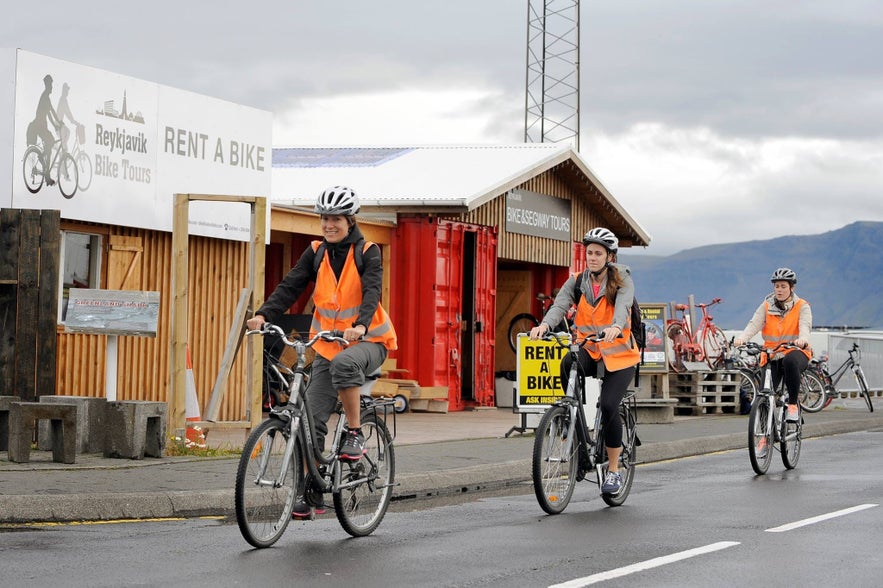
For the Reykjavík locals, cycling makes for a healthy and cheaper alternative to driving their vehicles. During the winter, the majority of bicycles are stored safely in the cupboard—some might say, where they belong—whereas the sunshine-filled summer sees Icelanders celebrating the opportunity to oil their chains.
It’s not quite Amsterdam, but Reykjavík often feels a touch like it—namely, in those dazed moments dodging bikes on the pavement.
But, to be fair, when the conditions are right, cycling in Reykjavík feels natural. Aside from Laugavegur, the main shopping strip, the streets are usually quiet of pedestrian traffic, and there are ample bike paths to avoid actual traffic.
As previously mentioned, it is legal to ride on the sidewalks in Iceland as long as the cyclist takes responsibility, keeping their speed low and leaving ample room for passing pedestrians. Cyclists will also find some designated biking lanes that run adjacent to the sidewalk. The further one gets away from the centre of the city, the fewer bike routes there are.
If you’re staying in the capital but wish to avoid the perils of traffic, it is advised to use the city’s public transport system. Buses travel out to such destinations as Borgarnes, Akranes, Hveragerði and Þingvellir National Park, all of which sport incredible cycling routes. It is not advised to cycle on the main motorway-like roads that carve through the capital.
Though this map is dated to 2016, it still shows the main cycling routes through the city, giving you an idea of the available routes before you head out.
Other Grievances
Some final thoughts before heading out on your quest for self-acceptance—the emergency number in Iceland 112, and medical centres and pharmacies can be found in most towns around the country. Hospitals, on the otherhand, are only found in the largest urban settlements.
The following websites (www.hagkaup.is—www.byko.is—www.husa.is) are a;; shop chains that sell seasonal bike equipment, so it is recommended to get to grips where you can find said outlets. Those looking for camping accommodation for their trip should check out websites such as www.cyclingiceland.is/campsites_huts and our own comprehensive article Camping in Iceland | All You Need to Know.
Depending on what type of cyclist you are will guide exactly which tour you'll likely choose. If you're an adrenaline junky looking to carve through Iceland's mountainous trails, we would recommend mountain biking. For longer journeys, thinner tyres are recommended. It is also possible to try Fat Bikes in Iceland—these unique machines come equipped with wide tyres, making it possible to traverse loose terrains such as sand and snow.
And one final thought; before taking my current position as a content editor at Guide To Iceland, I used to work as scuba diving and snorkelling guide at Silfra Fissure. Travelling out forty minutes from Reykjavík each morning, then returning forty minutes each afternoon, the summer roads, whilst quiet, were almost always plagued by “rows” of cyclists.
I can understand the temptation to cycle beside one another. After all, cycling hits that delicate balance between physical exertion and all-around boredom almost perfectly; it would be nice to have a little conversation during the ordeal.
What I never could quite understand, however, was the reluctance to slip back into a convoy formation upon the approach of a large, metal, speeding truck...
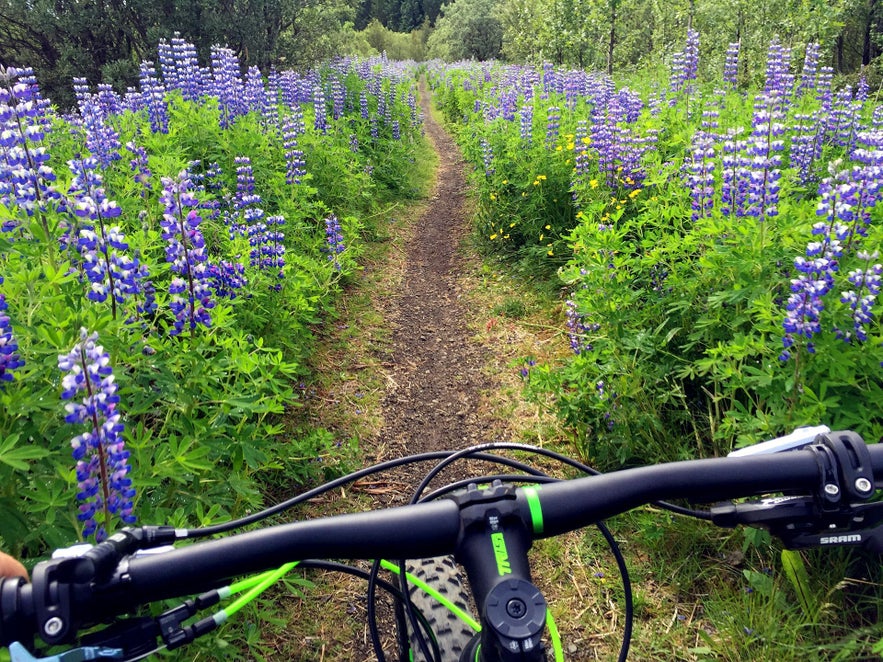
The problem is, cyclists very much herd themselves like wild animals, travelling in large migratory groups across the landscape. Whereas on your travels, you may see one or two of these mentally-questionable individuals cycling along, more likely than not, you’ll find yourself approaching five or six of the lycra-clad snowflakes.
Sometimes a polite toot the horn is beyond acceptable if only to let them know you’re also on the road.
Did you enjoy our blog about cycling in Iceland? Where was your favourite place to go cycling, and how many days did your journey take? Would you recommend cycling to other visitors in Iceland? Make sure to leave your thoughts and queries in the facebook comments box below.

